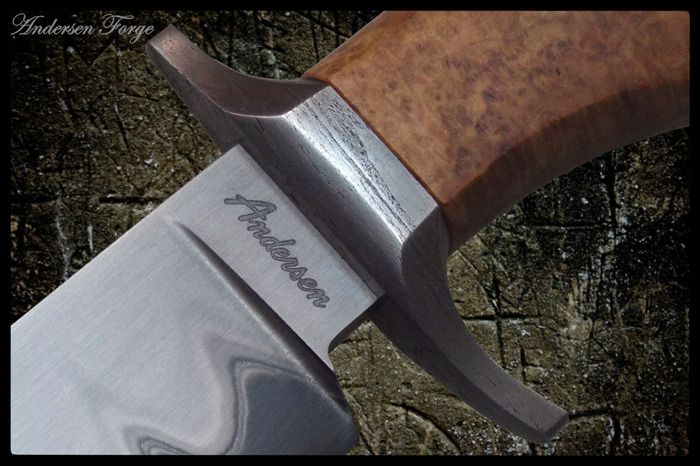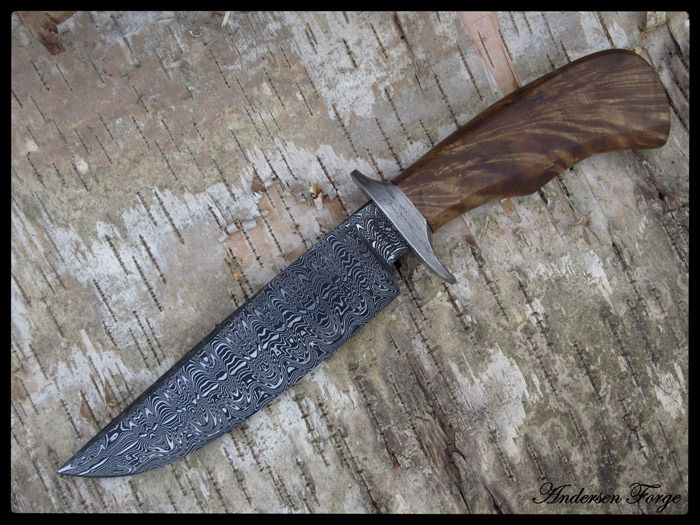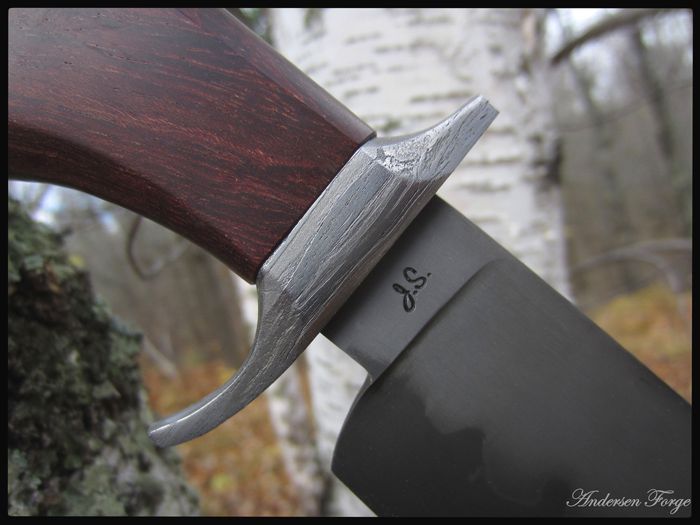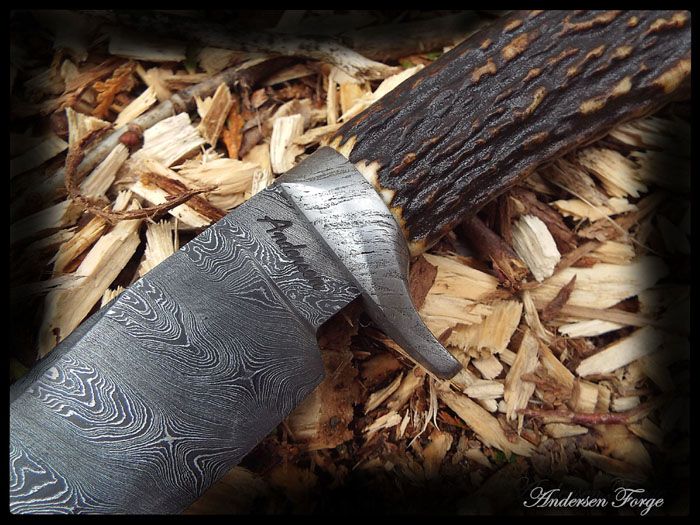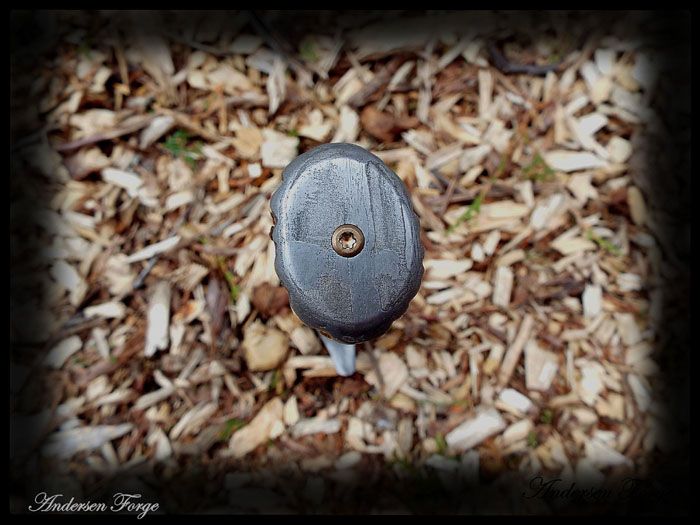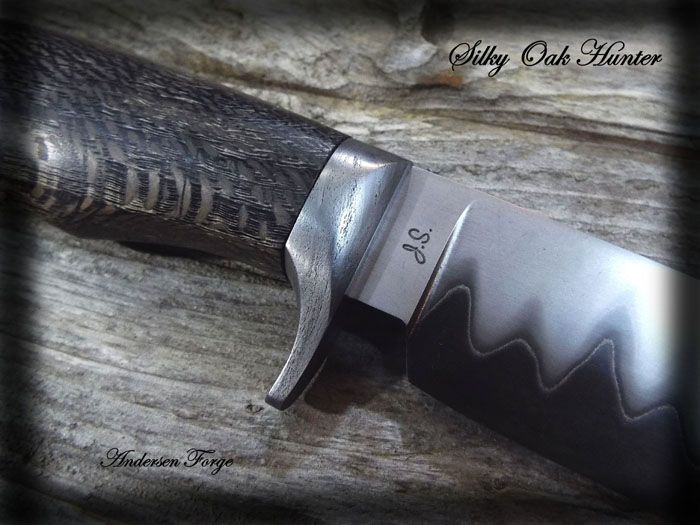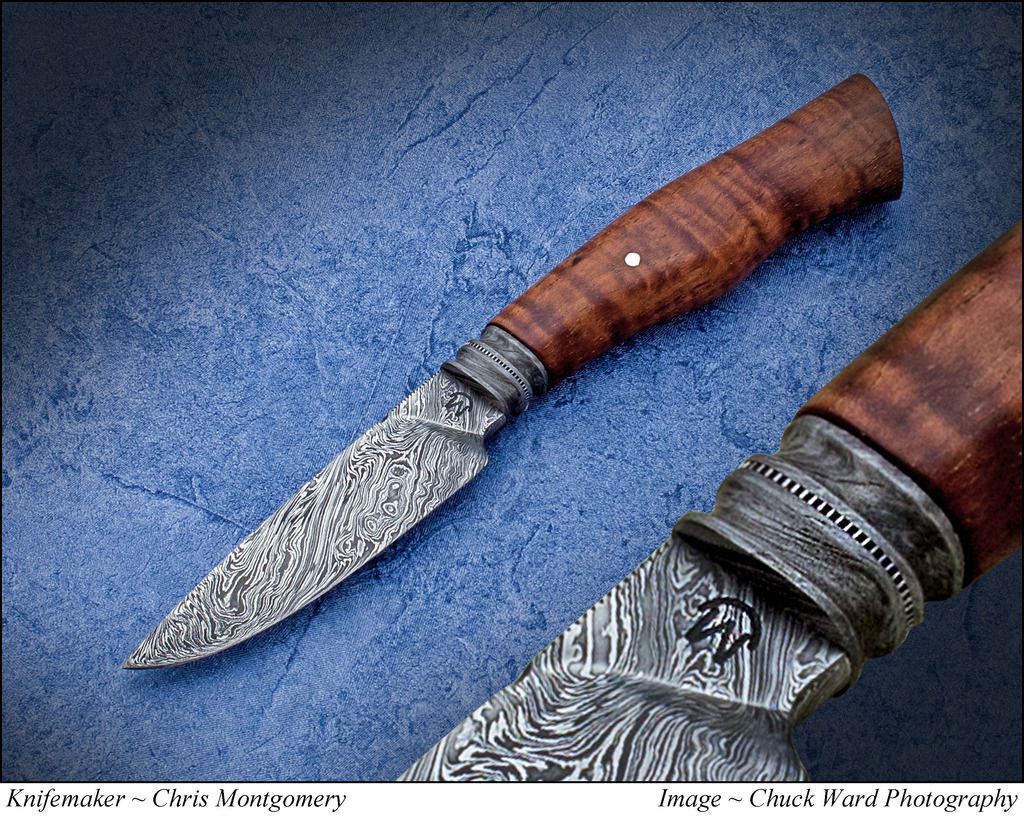The Topic of the Month for December 2015 is, using wrought iron for fittings. Many bladesmiths use wrought iron for knife fittings. This thread is to discuss where one can find and/or purchase wrought iron material and what finishing techniques work best for bring out the unique pattern in wrought iron.
Just in time, I finished one with wrought iron from anchor chain material. not seeing a pattern after etch, I just blued it. look forward to others methods and source.
Looking forward to this one. I'm planning to use some wrought for a guard this winter. The stuff I have came from old wagon wheel rim that I bought from a guy. I'll be curious to hear how high in grit folks take their fittings before etching.
Jeremy
Jeremy Lindley, Apprentice Smith
I do not use a lot of it, have it just don't use it that much. Usually I brown mine with birchwood casey plum brown. I also usually take it to 800 to 1000 before browning. One thing, if you are going to forge it, do it HOT. Too cold and it will come apart. Also some wrought iron is finer with less inclusions, different quality. You can try different things like twisting it. Makes
an interesting guard.
Brion
Brion Tomberlin
Anvil Top Custom Knives
ABS Mastersmith
I have sold probably 1000+ pounds of it over the last 15+ years and used it for fittings more times than I can count.
Mine was sourced from a bridge that collapsed into a river in Illinois. The bridge was built in 1903.
It was a pseudo suspension-type bridge and what I collected was a lot of connective straps and so forth.
I try to not forge it much. This reduces the "grain" that we so often seek in wrought. It has much more character if not refined.
I do, however, twist when I can. I find twisted wrought the finest exhibition of its character.
I finish the components to a really clean 1200 grit and deeply etch it to reveal its richness.
Karl B. Andersen
Journeyman Smith
I will also point out that, from time to time, wrought can rust a bit.
But, no worries. It is so easy to fix.
If it is deeply etched, simply dab a few drops of any light oil on it and give a quick rub with 0000 steel wool.
Done.
But quite honestly, I still have my first take down knife I made in '99. Wrought iron guard and butt cap.
15 years later - no rust.
Karl B. Andersen
Journeyman Smith
There seemed to be a large difference in the quality of the wrought iron from years back. Some is pretty clean while other is filled with impurities which is what I really prefer using as I feel that it has a lot more character.
I'm not sure if it's just me but I have gotten wrought iron to blue better than steel in most cases.
Gary
I couldn't get a good etch with ferric, so I tried muriatic acid. It worked great, but had a grey look. I re-etched it in ferric and it looked almost like Damascus.
Dale Huckabee
Journeyman Smith
dalehuckabeeknives.weebly.com
The wrought iron I have been using is from an old wagon axle I found at a junk/antique shop. I reduced the bar to a more suitable size and twisted it for the effect. I etched mine in ferric, washed it thoroughly with Windex then polished with Never dull metal polish. I like the way it turned out.
Chris
|quoted:
I have sold probably 1000+ pounds of it over the last 15+ years and used it for fittings more times than I can count.
Mine was sourced from a bridge that collapsed into a river in Illinois. The bridge was built in 1903.
It was a pseudo suspension-type bridge and what I collected was a lot of connective straps and so forth.
I try to not forge it much. This reduces the "grain" that we so often seek in wrought. It has much more character if not refined.
I do, however, twist when I can. I find twisted wrought the finest exhibition of its character.
I finish the components to a really clean 1200 grit and deeply etch it to reveal its richness.
I found How number five's (from the top) butcap interesting and was wondering how it was attached?

